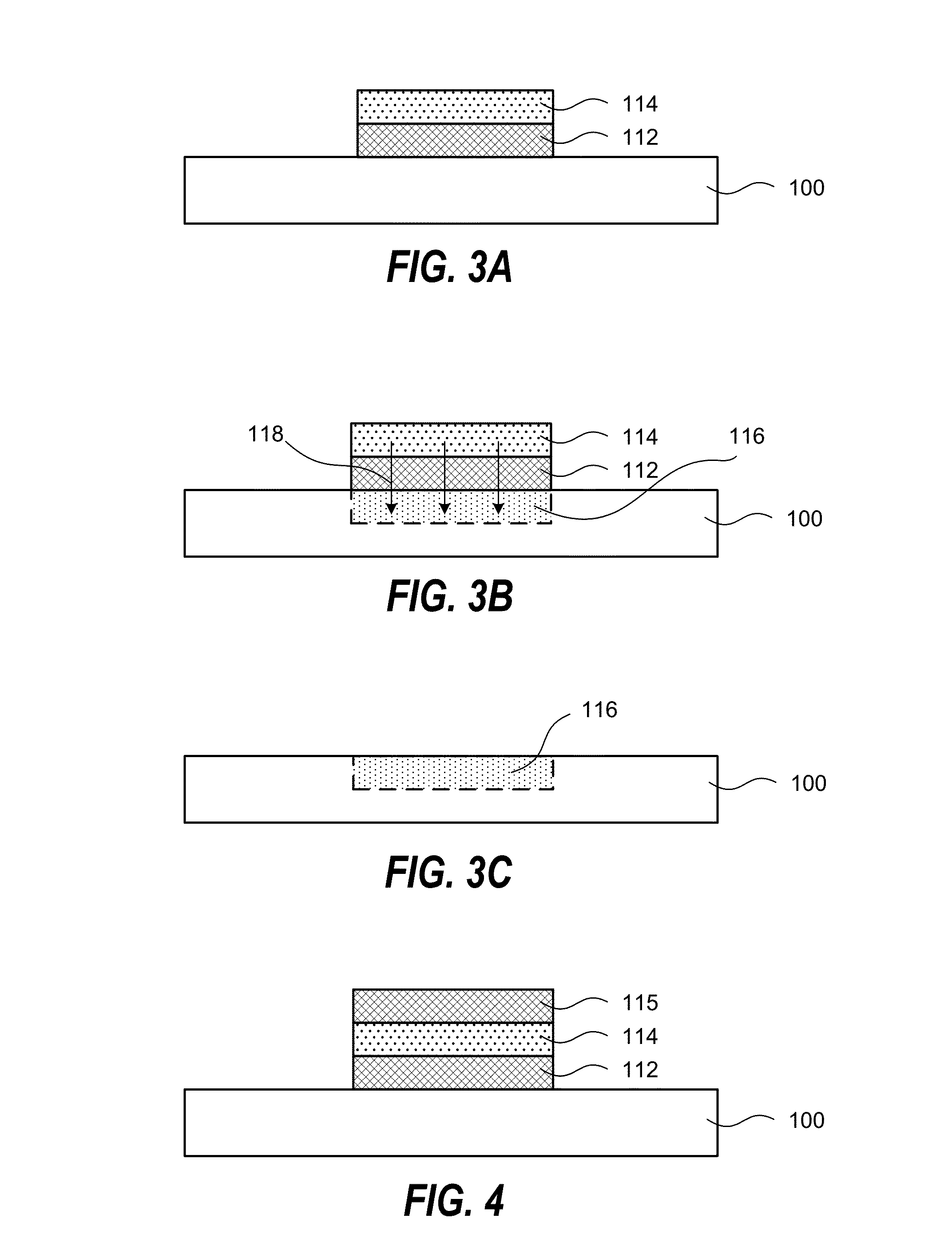Method of controlling solid phase diffusion of boron dopants to form ultra-shallow doping regions
- Summary
- Abstract
- Description
- Claims
- Application Information
AI Technical Summary
Benefits of technology
Problems solved by technology
Method used
Image
Examples
Embodiment Construction
[0020]Methods for forming ultra-shallow boron dopant regions in semiconductor devices by solid phase diffusion from a boron dopant layer through a diffusion filter layer into a substrate layer are disclosed in various embodiments. The boron dopant regions can include, for example, ultra-shallow source-drain extensions for planar transistors, FinFETs, or tri-gate FETs. Other applications of ultra-shallow boron dopant region formation can include channel doping in replacement gate process flows, and for FinFET, or extremely thin silicon on insulator (ET-SOI) devices. Devices with extremely thin alternative semiconductor channels may also be doped using the disclosed method, for instance germanium on insulator devices (GeOI) or Ge FinFETs, and III-V channel devices such as GaAs, InGaAs, or InGaSb FinFETs. In addition, devices formed in amorphous Si or polycrystalline Si layers, such as EDRAIVI devices may utilize the disclosed method to adjust the Si doping level.
[0021]One skilled in t...
PUM
 Login to View More
Login to View More Abstract
Description
Claims
Application Information
 Login to View More
Login to View More - R&D
- Intellectual Property
- Life Sciences
- Materials
- Tech Scout
- Unparalleled Data Quality
- Higher Quality Content
- 60% Fewer Hallucinations
Browse by: Latest US Patents, China's latest patents, Technical Efficacy Thesaurus, Application Domain, Technology Topic, Popular Technical Reports.
© 2025 PatSnap. All rights reserved.Legal|Privacy policy|Modern Slavery Act Transparency Statement|Sitemap|About US| Contact US: help@patsnap.com



